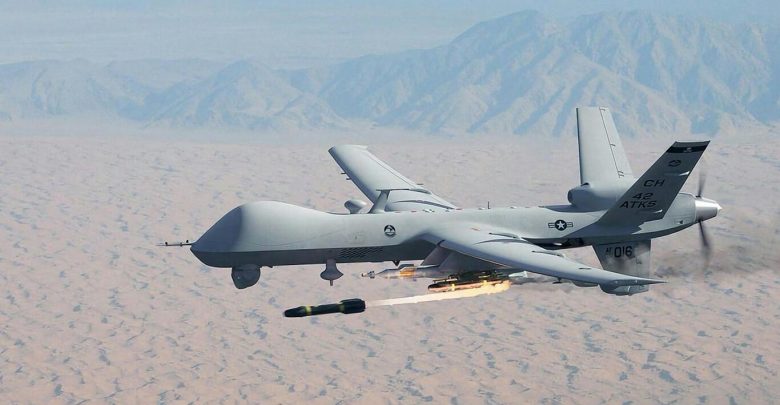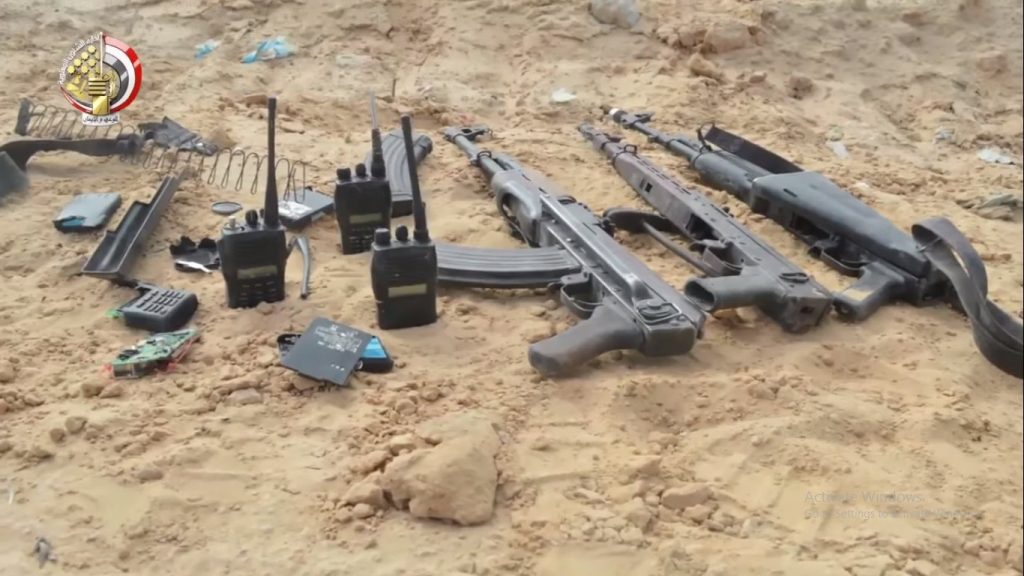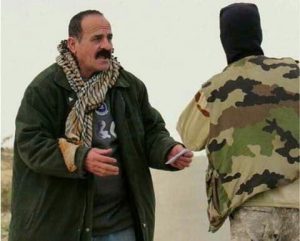
Development of the military situation in Sinai – Jan.
While no more official military communiques on Operation Sinai-2018 have been issued by the military spokesman, Egyptian Foreign Minister Sameh Shoukry on 8 January 2019 announced (in an interview with a State-owned satellite channel) that “The Comprehensive Military Operation Sinai-2018 has destroyed the infrastructure of armed organizations and their ability to operate”.
Sameh Shoukry’s comment is not the first statement issued by an Egyptian official claiming that the regime has eliminated the structure of the armed organizations in Sinai. In fact, the Egyptian security dilemma in Sinai would continue as long as its causes are still there, i.e. the escalating repression and human rights violations, with the possibility of exploding more violently at an unexpected time. However, January witnessed the resurgence of high rates of arbitrary arrest and detention, and the return the policy of arresting women in various areas, such as Arish and Sheikh Zuwaid.
During January, we have monitored emergence of new charities funded by the UAE regime in North Sinai, which raises questions about the role that the UAE wants to play in Sinai. The government resolution of imposing a curfew in some areas of North Sinai has been renewed for three months. The decision, issued by Prime Minister Mostafa Madbouli and published in the Gazette on 16 January 2019 is applicable in the areas from Tal Rafah in the eastern part of the Sinai Peninsula to the international border, and from Al Awja till Mount Halal from 7:00 pm to 6:00 am. The Comprehensive Military Operation Sinai-2018 was unofficially ended although it is continued on the ground through acts of destruction, vandalism, forced eviction, arbitrary detention and physical liquidation.
Military and security developments
The following graph shows a comparison between the military losses of the two conflicting parties during the last six months, according to sources from both parties as well as the monitoring of the Egyptian Institute of Studies:

First: Casualties and Losses as declared by the Army and militants
– Following are the casualties and losses during January 2019 disseminated from the Egyptian Army communiques and the statements declared by militants as well as media reports:
1- Casualties and Losses as Declared by Egyptian Army
The military spokesman of the Egyptian Army issued two military communiques on developments of military operations during this month, while the Egyptian Ministry of Interior issued one statement on the ministry’s official page on the internet.
The casualties and losses in the ranks of militants according to the data of both ministries of Defense and Interior were as follows:
– 66 militants were killed,
– 142 persons were arrested under many allegations,
– 2 hideouts were discovered and destroyed,
– 21 vehicles were seized, confiscated, or destroyed
– 43 motorcycles were seized,
– 242 IEDs were destroyed,
– 6 tunnels were destroyed, and
– Many weapons and ammunition were seized.

The military spokesman also announced that an army officer and 6 soldiers were killed in military operations during January.
2- Casualties and Losses as Declared by militants and media reports
According to what was monitored by the Egyptian Institute for Political and Strategic Studies in january, the losses of the army and police forces were as follows:
– At least 12 military personnel, including 1 officer, were killed,
– Two local militants collaborating with the army were killed,
– At least 17 military were injured, and
– One pro-army local militant was injured.
In fat, these figures do not reflect the size of the army’s military losses when compared to the size of the armored vehicles that were targeted. The IS-affiliate Sinai Province also arrested an Interior Ministry forensic expert between al-Arish and Bir al-Abed

– At the level of operations, the IS-affiliate Sinai Province fought more than 8 clashes against the army forces, carried out 9 attacks with sniper weapons, and used 25 improvised explosive devices, setting two army ambulances on fire, and detonating a booby-trapped house targeting a military force inside.
Second: Overview of the military operation developments
Following is an overview of the developments of the military operations during January 2019:
Despite the fact that Operation Sinai-2018 has been unofficially ended, military campaigns have continued, and our assessment and observations on these operations during January were as follows:
– This month saw an intensive use of the Air Force in carrying out aerial attacks, that were concentrated in the first week of January, where the Israeli air force carried out many of these attacks.
– On 11 January, the IS-affiliate Sinai Province organization launched an attack on a military checkpoint on the road between Anaber and Naqzat east of El Arish, and clashed with the support force that came out for help in Karam Al Qawadis, damaging two armored vehicles,
– On 17 January, the IS-affiliate Sinai Province organization attacked Rafah hospital – after the army forces turned it into a military barracks – engaged with the army force, set two ambulances that serve the army forces, and detonated an explosive device under an army rescue vehicle.
– The organization set up a mobile ambush on the international road between the El-Arish and Bir al-Abed and arrested an Interior Ministry forensic expert, Adib Nakhleh (55), then they clashed with a police patrol and seized a government-owned truck in North Sinai.
– The Sinai Province documented the drone attacks carried out by the Israeli Air Force on some areas south of Sheikh Zuwaid City, where Pro-IS A’maq News Agency published a visual material showing the shelling.
– The regime’s continuation of the policy of physical liquidation of some of the forcibly disappeared, where the Interior Ministry’s National Security Apparatus announced liquidation of 5 citizens on 16 January, under the pretext of being militants killed in clashes with the police during security raids in the city of El Arish and its outskirts. The military spokesman announced that army and police forces liquidated and killed 61 citizens under the same pretext in two statements dated on 22 and 27 January.
– The Egyptian Ministry of Interior maintained its policy of restricting freedom of movement of citizens in the cities of El-Arish, Sheikh Zuwaid and Rafah, while security raids continued in the villages of Bir al-Abed area.
Third: Israeli drone attacks and violation of sovereignty
January saw an intense activity of Israeli drones, specifically on 2 and 3 January, where approximately 40 air raids were monitored in Rafah, Sheikh Zuwaid, and El-Arish, with approximately 15 other raids during the rest of the month, in addition to aerial surveys and reconnaissance. We were able to monitor the following:
– On 2 January, there were more than 15 drone attacks by the Israeli air force that targeted areas in Rafah, Sheikh Zuwaid, and El-Arish between 5:00 and 7:00 p.m.
– On 3 January, there were more than 25 Israeli drone attacks targeting areas in Rafah, around the Al-Jura airport, south of Sheikh Zuwaid, and areas south and east of El Arish. Social networking sites circulated images of the effects of shelling.
– On 10 January, there were two Israeli drone attacks in Al-Masoura village, Rafah.
– On 14 January, there were three Israeli drone attacks targeting areas south of Rafah and south of Sheikh Zuwaid.
– On 21 January, there were activities of aerial reconnaissance by two drones belonging to the “Israeli” Air force, over the villages of Masura, Tayra, Rafiah, and Shalalfa, south of Rafah City.
It is noteworthy that intervention of “Israeli” drones in Sinai has been taking place on a regular basis since 2011, and Egypt began to pay attention to the use of these drones since 2016.




